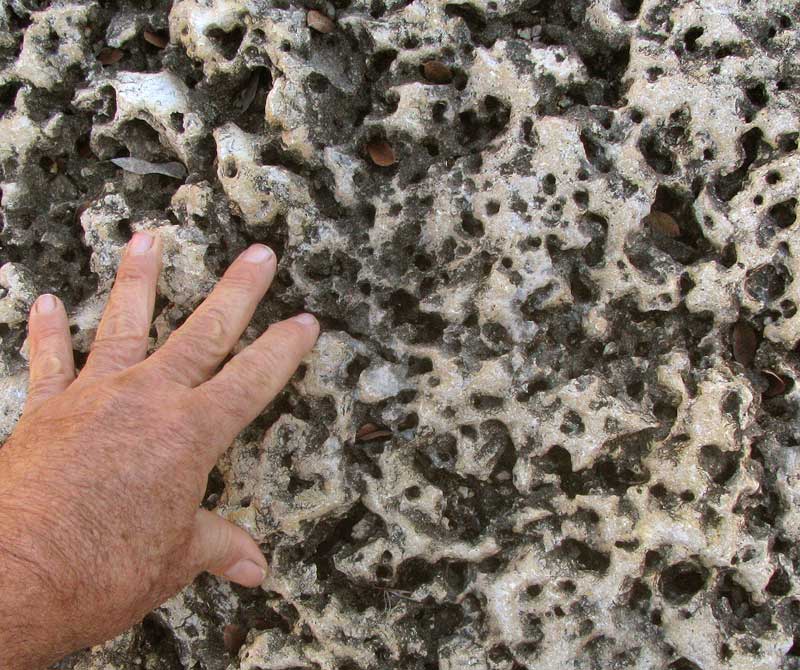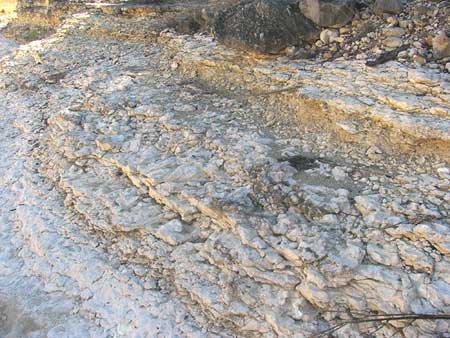Excerpts from Jim Conrad's
Naturalist Newsletter

from the December 22, 2013 Newsletter issued from the Frio Canyon Nature Education Center in the valley of the Dry Frio River in northern Uvalde County, southwestern Texas, on the southern border of the Edwards Plateau; elevation ~1750m (~5750 ft); N29.62°, W99.86°; USA
FOSSIL WORMHOLES
Along the Dry Frio not far from here there's the spot shown below:

That's mudstone, and standing there seeing what looks like so many odd-sized bags of flour packed together, it's easy to imagine that the mud from which it was formed was deposited fast -- so fast that it didn't settle in neat, thin layers but rather large lumps that rolled around in rushing water collecting with other lumps in eddies, and eventually being buried beneath more mud. And all this happening ±110 million years ago, during the Early Cretaceous Period, when dinosaurs roamed the area. The approximate date of the mud's deposition is known because these rock strata are members of the Glen Rose Formation, whose age has been determined, at the beginning of Cretaceous Era.
In the lumpy mudstone shown above I've found no fossils, but that's to be expected if the mud was deposited so fast and maybe violently -- as during a hurricane or a monumental flood -- that no creatures could have lived there.
However, atop this mudstone formation there's a shallow layer of limestone composed of very fine, clay-like particles and microscopic animal shells that was deposited much more slowly in a more tranquil environment, maybe in a mudflat or shallow sea. A picture taken looking down on that unit appears at the top of this page.
The holes were made by worms burrowing through the mud ±110 million years ago. Probably these aren't the original holes. It's more likely that the tunnels were filled with something that within the last million years or so eroded away faster than the surrounding limestone. The holes are not mere pits; in many places you can hook your finger into one hole and out the other.
This stratum of abundant worm burrows is fairly thin, but you can follow it for a good distance in outcrops along the Dry Frio's low cliffs.